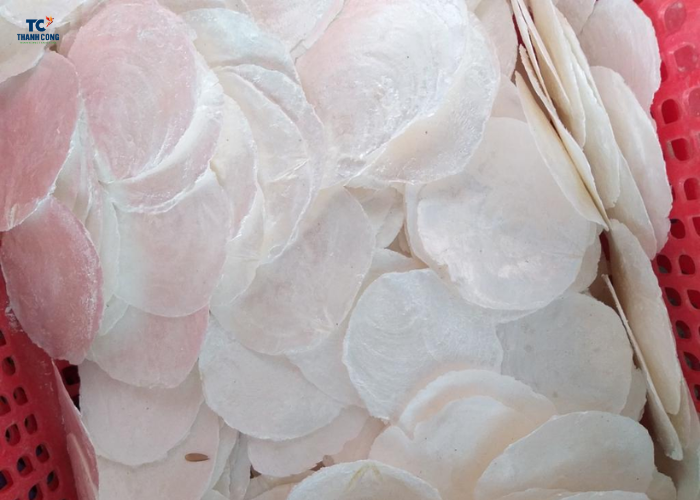Mother of pearl inlay is one of the traditional handicrafts of Vietnam, requiring meticulousness, elaborateness and high technique. Each mother of pearl inlay painting is not only a work of art but also contains the quintessence of national culture through hundreds of years of history. The process of making mother of pearl inlay paintings is complicated, including many steps from selecting raw materials, preparing the surface, to cutting, inlaying, and finishing. Let’s explore each step in the process of making mother-of-pearl painting to understand more about the ingenuity and talent of the artisan.
Contents [hide]
1. Choose materials
Raw materials are the first important factor that determines the quality of a mother-of-pearl mosaic painting. Mother-of-pearl is the shell of clams, mussels, and sea snails, which is hard, shiny, and has a natural sparkling color. These shells are often collected from sea areas with ideal natural conditions to create thick and durable mother-of-pearl shells.
- Mother-of-pearl shells: Artists often choose shells with moderate thickness, even color, and smooth surface to ensure that when inlaid on the surface of the painting, the lines of the motifs will be sharp and delicate.
 The mother-of-pearl shell is carefully ground to a moderate thickness
The mother-of-pearl shell is carefully ground to a moderate thickness
- Wood: Wood is the main base for mother of pearl inlay. The wood types chosen are usually rosewood, mahogany or ebony which are durable and retain their beauty over time. The wood is carefully treated to avoid termites and warping during the inlaying process.

Natural Sapele Wood
2. Surface preparation
The surface of the painting needs to be perfectly treated to ensure the mother-of-pearl pieces adhere firmly. The artisan uses manual tools such as planes, saws, and sandpaper to smooth and smooth the wood surface before starting the inlay process.
- Smoothing the wood: The wood surface after being planed needs to be smooth so that when inlaying mother-of-pearl, the mother-of-pearl pieces can stick firmly to the surface without being displaced.
- Sketching: Before cutting and inlaying mother-of-pearl, the artisan will sketch the motifs on the wood surface. These drawings can be patterns, natural landscapes, or cultural symbols such as dragons and phoenixes. This sketch will be the template for the artisan to cut mother-of-pearl to the correct shape and size.
 Sketch for precision and accuracy
Sketch for precision and accuracy
3. Mother of pearl cutting
Cutting mother of pearl is an important step and requires the highest level of technique in the mosaic making process. Artisans use special tools to cut mother of pearl shells into small pieces according to the outlined shape.
- Cutting technique: The craftsman must be extremely skillful to avoid breaking or chipping the mother of pearl during the cutting process. The cutting must be precise to the millimeter so that when the mother of pearl pieces are assembled, they create a perfect picture without being separated.
- The sophistication of each cut: Each piece of mother of pearl must be of uniform size, with the right curvature so that when attached to the surface, it creates natural light effects and softness for the picture.
 Mother of pearl cutting requires highly skilled craftsmen
Mother of pearl cutting requires highly skilled craftsmen
4. Inlay mother of pearl on the surface
 Ethnic beauty on each piece of mother of pearl
Ethnic beauty on each piece of mother of pearl
After cutting, the mother-of-pearl pieces will be inlaid onto the wood surface according to the sketched position. This process requires meticulousness and careful attention to every small detail to create vivid patterns.
- Arrange the pieces: Small mother-of-pearl pieces are inlaid onto the wood surface one by one, forming complex images such as flowers, leaves, birds, fish, landscapes or traditional cultural symbols. Each piece needs to be aligned to perfectly match the drawing.
- Use specialized glue: The artisan uses natural glue to fix the mother-of-pearl pieces to the wood surface, ensuring that they stick firmly and do not fall off during use.
5. Grinding and polishing
Once all the mother-of-pearl pieces have been inlaid, the painting will go through the grinding and polishing process to create shine and smooth the surface.
- Grinding mother-of-pearl: This step is done carefully to remove excess mother-of-pearl, ensuring the surface of the painting is smooth and without ripples. The artisan often uses a grinding stone or sandpaper to create perfection for the painting.
- Polishing: After grinding, the painting will be polished with natural materials to create shine and highlight the sparkling beauty of mother-of-pearl. This process not only helps protect the painting but also increases the aesthetics, making the mother-of-pearl mosaic painting more vivid and brilliant under the light.
6. Finishing and checking
The final step is to finish the painting, including checking every little detail to ensure there are no errors during the inlay process. The finished painting will be bordered and framed to enhance its aesthetics and value.
- Quality check: The artisans will carefully examine the painting from every angle, ensuring there are no technical errors. This is an important step to ensure the final product meets the highest standards.
- Framing: Mother of pearl inlay paintings are often framed with a wooden or copper frame, depending on the aesthetic needs of the customer. The frame helps protect the painting and highlight the work.
 Mother of pearl painting after completion
Mother of pearl painting after completion
The process of making mother of pearl inlay paintings not only requires skill and patience but also a deep understanding of traditional art. Each painting is the result of hundreds of hours of manual labor, a combination of talent, passion and the spirit of preserving the cultural heritage of the artisan. Mother-of-pearl inlay works not only have artistic value but are also a symbol of pride in the cultural traditions and craftsmanship of the Vietnamese people.
7. Preserving and promoting the art of mother-of-pearl inlay
Despite facing many challenges from the industrialization process and the development of modern art forms, mother-of-pearl inlay still retains its own appeal. Many traditional craft villages are still making efforts to preserve and promote this art.
 Preserving and promoting the art of mother-of-pearl inlay
Preserving and promoting the art of mother-of-pearl inlay
The state’s incentive policies and the attention of cultural preservation organizations have helped the art of mother-of-pearl inlay not only survive but also develop strongly. In addition, the application of mother-of-pearl inlay in modern interior design is also opening up many new opportunities for the Vietnamese handicraft industry.
Mother-of-pearl inlay is not only a work of art but also a symbol of talent, sophistication and traditional Vietnamese culture. Through many generations, this art has maintained its special position and contributed to preserving the cultural values of the nation. Mother-of-pearl mosaic paintings not only beautify the space but also tell historical and cultural stories through every small detail, contributing to the unique cultural identity of Vietnam.
If you have any further questions, don’t hesitate to send thanhcongcraft an email us at info@thanhcongcraft.com or message us at WhatsApp: +84967485411.
Hope to serve you soon! Best regard!


